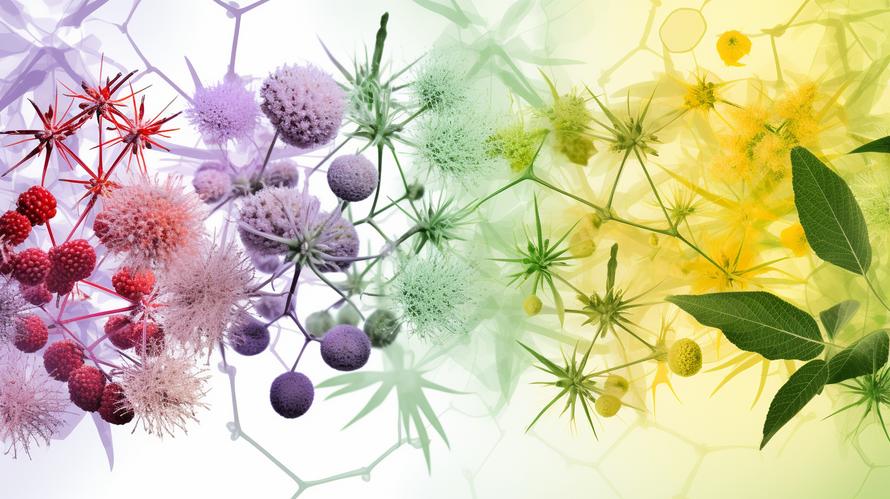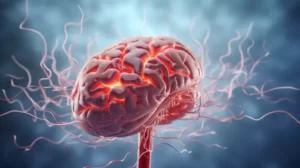In the rainforests of the Amazon, a vine weaves its way through the lush green canopy, largely unnoticed by the passing world. This nondescript plant, known by the local indigenous people for centuries, harbors a secret with the potential to revolutionize the way we approach one of modern medicine’s most elusive ailments: Alzheimer’s disease. Noted scientists have isolated an alkaloid from this plant that offers a whisper of hope, a game changer in the form of a molecule tiny enough to cross the blood-brain barrier, yet powerful enough to wage war against the ravages of cognitive decline.
This alkaloid joins a cadre of plant-derived chemicals that have woven their way into the fabric of modern pharmacology. Penicillin from fungus, aspirin from willow bark, and morphine from the opium poppy – all these signify nature’s unassuming generosity to human health. The silent superstar within our rainforest vine, with its complex molecular structure, has captured the attention of neuroscientists and gerontologists around the globe. Why? Because it holds unique neuroprotective properties that could defend the brain from the progressing deterioration caused by Alzheimer’s disease.
To understand the significance of this discovery, we must dive into the cellular mayhem that characterizes Alzheimer’s. The simplest explanation is that Alzheimer’s is like a biological thief, it steals memories, personality, and the essence of what makes an individual unique. At the crux of this thievery is the buildup of two proteins: amyloid-beta plaques and tau tangles, which interfere with neuron communication and eventually lead to cell death. The brain, an intricate network of connections, unravels until the tapestry of one’s mind is rendered threadbare.
The therapeutic potential of this particular alkaloid lies in its neuroprotective capability. Preliminary research has shown that it not only shields neurons from the toxicity that breeds in an Alzheimer’s-afflicted brain but also seems to promote nerve growth. This could be equivalent to not just erecting a defense against the tide but actively repairing the sea wall in the midst of a storm – a double action approach to neurodegeneration that has so far been a pipe dream for researchers.
But this is no cure-all elixir. No single compound is. The treatment of Alzheimer’s disease resembles a multifaceted chess game where each piece plays a critical role in checking the formidable opponent.
One of these crucial roles is maintaining a healthy lifestyle. Regular exercise, a nutritious diet, mental stimulation, and social interaction all form the preventative bulwark that can slow the progression of Alzheimer’s. For those already engaged in this battle, incorporating these aspects into their current strategy might help fortify their defenses against the disease’s progression.
Another promising angle is the personalized medicine approach. As our understanding of genetics deepens, researchers see that Alzheimer’s is not a one-size-fits-all disease. It is as unique as the individual battling it, with genetic and environmental factors creating a complex matrix of risk and progression. Recognizing this, the application of plant-derived alkaloids may soon move toward a tailored treatment model, wherein patients receive doses and combinations targeted to their specific condition.
The future of Alzheimer’s treatment is not yet written, and it owes much to the hidden arsenal within our planet’s flora. While pharmaceutical giants are often criticized for their multi-billion dollar synthetic drugs, the quiet narrative is that 50% of the drugs approved in the last 30 years come from natural compounds.
While the promise of naturally occurring chemicals like our Amazonian alkaloid is encouraging, it comes with its own set of challenges. The extraction and synthesis of these compounds must be economically viable and sustainable. Additionally, the protection of biodiversity hotspots – such as the Amazonian rainforest from where our lead actor originates – is paramount. It serves us nothing if in our quest for cures, we decimate the very cradle that yields them.
For the readers who are looking skyward for a silver bullet to cure Alzheimer’s, your gaze might better be directed earthward, to the greenery beneath your feet and beyond. While we celebrate the marvels of modern science, let us not forget the natural library of remedies that has been under our noses – and above our heads – all along.
What can one do with this knowledge? For individuals at risk or watching a loved one navigate the uncertain waters of Alzheimer’s, the key takeaway would be measured hope. Advocacy for more research into plant-derived compounds is crucial, supporting policies that protect our natural resources is necessary, and participating in clinical trials if eligible could provide the push needed to sail these promising treatments from laboratory benches to bedside cabinets.
Losing memories to Alzheimer’s may seem like an inevitable twilight, a creeping shadow that dims the day’s beauty. Yet, as long as there are untapped sources in nature and relentless inquiry in science, the pursuit of remedies will continue unabated. The plant-derived alkaloid from our serendipitous vine is but one of the many potential heroes in this saga, a beacon of hope flickering in the vast, often daunting arena of Alzheimer’s research. With continued support and investigation, we may find that the very ground we walk upon holds the key to safeguarding our most precious memories and the very essence of who we are.



